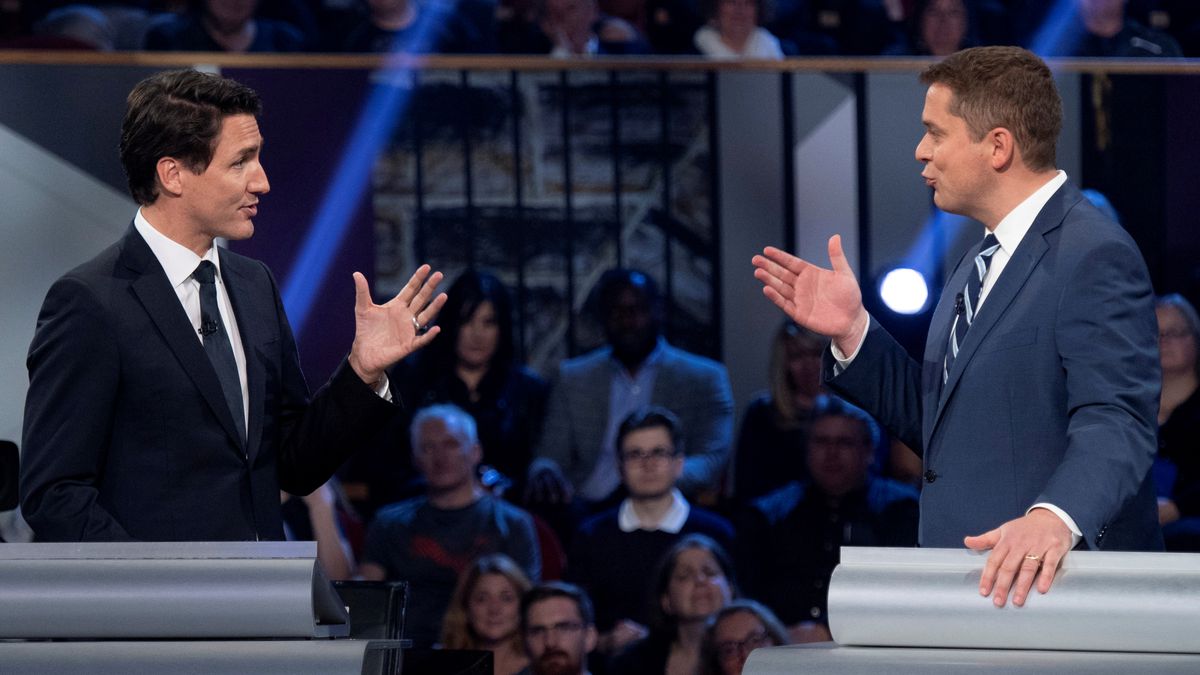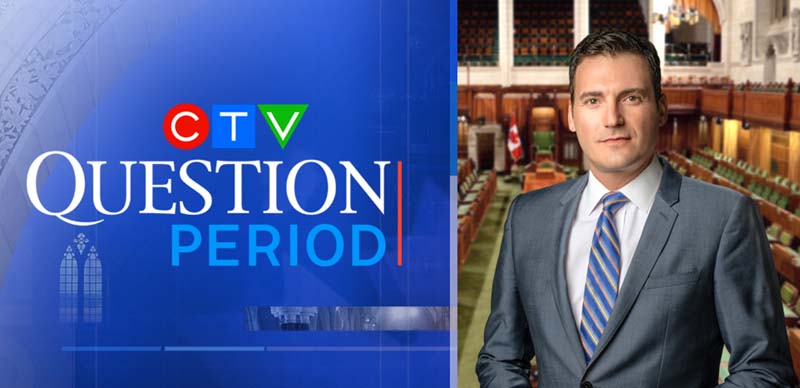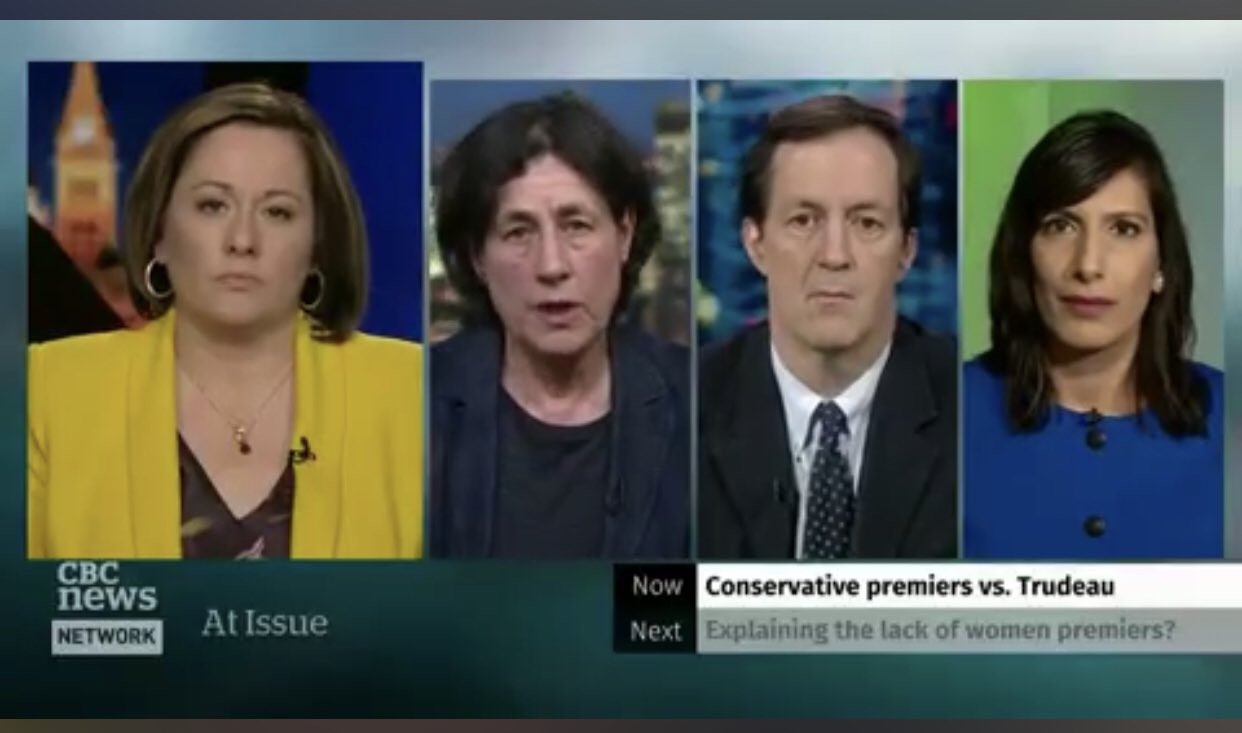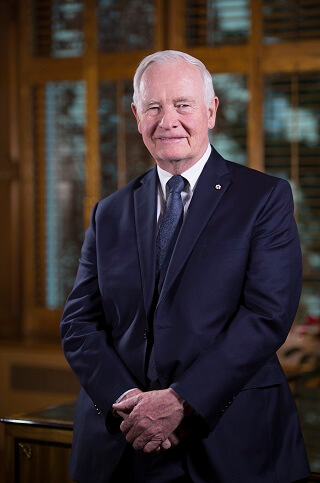Overcoming Political Amnesia #3
November 19, 2021
For example, lawyers have a courtroom in which to perform according to well-honed rules for presenting evidence, questioning witnesses, and addressing a judge or jury – all of it formalized debate between two sides. Parliamentary players have the House of Commons. Its transformation by televised coverage of proceedings has so mutated exchanges across the aisle that set-piece performances and talking-point modules are now the sterile fare. Absence of a connection between question asked and answer given has become so routine that democratic accountability intended by the concept of Responsible Government has largely faded into meaningless. In its place we see angry posturing answered by distracting non-sequiturs. Yes, television and time limits have upgraded some aspects of parliamentary performance; nobody misses the long-winded speeches of yesteryear. But only rarely do we now see an issue joined as its’ pros and cons are precisely illuminated. For contemporary performance in the Commons, the word “debate” is still used but its meaning has changed.
Shifts in Political Messaging
Rather than effective debating, our political culture now celebrates political show.
Going for “the sound bite” matters because a pithy put-down, a teary-eyed apology, or a pungent metaphor can merit a brief clip and public exposure on television news. “Staying on message” is the dominant mantra, with speech modules written by departmental staff or scripted by a party’s research office handed to MPs as they head into the Commons to “debate.” Leaders and MPs today take training on how to answer anticipated or probable questions from journalists, as they do in the House from MPs, with rehearsed remarks.
Party leaders who’ve adopted this style of political communication increasingly frustrate reporters by just parroting the same general message over and over – rather than answering their specific questions, increasingly resembling robots more than sentient humans. And when they enter an election campaign, they are uneasy with real debate because it is not part of their practised skillset.
Leaders do submit to one-on-one interviews with well-known television personalities, exchanges which over time have morphed from deferential to inquisitorial. This substitute for direct political debate in Ottawa, with pointed questions and direct responses, has become a Canadian alternative. In lieu of a joining of issues between party leaders, this news media forum seeks explanation and accountability. Increasingly, this channeled form of debate – on a set rather than in the Commons – has expanded beyond party leaders. Ministers and their Opposition critics, and Parliamentary Secretaries and their Opposition counterparts, are also invited onto Ottawa-based network television programs for a split-screen format debate about current public developments. The program’s host is both moderator and instigator, directing who speaks and posing the questions.
These developments have collectively given members of the Press Gallery a more dominant status in the public affairs equation than they had with print journalism and by-lines. Indeed, Ottawa-based broadcasts now even entail radio and TV hosts interviewing guests who are not politicians but other journalists from the print side who report on politics. The way they discuss and debate on air what’s happening in political Ottawa is reminiscent of conversations that took place “off camera” in the Press Gallery.
 |
|
In 2021’s general election, the Commission organized two of the three televised leaders’ debates, and TVA Nouvelles the third (at Montreal, in French.) In this moment of the English-language debate, Conservative Party leader Erin O’Toole adds precision to a point as Prime Minister Trudeau and NDP leader Singh listen. Also participating were Bloc leader Blanchet and Green Party leader Annamie Paul. Photo source: Toronto Star |
Clarity Versus Ambiguity
The many ways that journalists have moved beyond reporting political news to actively participating in generating democratic accountability expresses a necessary response to declining clarity on the part of political leaders themselves.
Ambiguity and obfuscation are hardly a new phenomenon in Canadian public life: Mackenzie King was the most obtuse leader Canada ever had, but was prime minister for 24 years; Arthur Meighen was the most forthright leader of any party, but was in the prime minister’s office only briefly. Many seeking high public office, mistaking longevity for success, seek to emulate King’s 4,172 shades-of-gray style.
All of which sets the context for what happens when elections roll around and “leaders’ debates” are expected.
Evolution of Election Debates
Since Confederation there have been campaign debates between candidates, sometime even between leaders, organized by the parties. Debating was the lingua franca of Canadian partisan politics.
For several decades in the television era, a threshold campaign issue was whether any such debates would occur at all. Through the mid-20th Century, as television opened new possibilities, news organizations and certain public affairs entities, rather than the political parties, began organizing debates and inviting party representatives to appear.
“All-Candidate Debates” at the constituency level have even been more of a staple in Canadian elections than “Leaders’ Debates,” although these often impassioned and colourful events receive localized media coverage and voter interest only in the constituency concerned.
Whether at the national or constituency levels, a consistent problem were the “No-Shows” – candidates or party leaders who decided not to participate. Avoiding public debate with one’s opponents during an election was the calculus of back-room campaign organizers. Prime ministers and premiers of various political stripes have stayed away, or their negotiators caused the debates to be aborted by intentional intransigence on some point about the debate’s format.
This approach of avoiding direct contact and accountability because of some perceived campaign advantage – “You’re ahead in the polls, so why share limelight with others?” – has back-fired in a number of instances both federally and provincially. It showed citizens the cavalier thinking that permeates contemporary campaigns and reflected poorly on the leader who ducked. The same backroom efforts to manipulate the electoral process and its outcomes by not debating has also been extended to negative attack ads against opponents, staged photogenic settings in which to film a leader, messaging linked to rolling polls, and blank-faced refusal to answer specific policy questions by shoveling fog at them instead.
 |
|
Four televised leaders’ debates took place during 2019’s general election, two organized by media organizations and two by the new independent Leaders’ Debate Commission (one in each Official Language). The six party leaders participating were PM Justin Trudeau of the Liberals and Opposition Leader Andrew Sheer of the Conservatives, seen here in a direct reasoning exchange. The other leaders, flanking them to the left and right, were Yves-Francois Blanchet of the Bloc Quebecois, Jagmeet Singh of the NDP, Elizabeth May of the Greens, and Maxime Bernier of the Peoples’ Party. Photo source: Globe and Mail |
Needed: A Statutory Framework for Electoral Events
The Canada Elections Act stipulates a great many things which parties and candidates must do to qualify for and participate in our country’s electoral process. This regulatory regime serves to make elections an equitable process for those seeking office.
Many provisions in the Election Act, as well as in the Broadcasting Act and Tax Act, aim at creating and maintaining a level-playing field for parties and candidates during elections. These range from time limits restricting campaign advertising to spending limits imposed on campaign expenses. Many other specific actions are also mandated – registering political parties, filing candidate nomination papers, reporting all campaign donations, appointing official agents to bear legal responsibility for lawful compliance with all rules, and more.
What is starkly missing from the Election Act is a provision requiring party leaders to publicly debate each other during the campaign period.
This lacuna in Canadian election law has been filled by others – news media, public interest groups, and policy organizations – trying their best to give citizens what is most needed in a democratic society at election time. But lacking the clarity and force of a statutory mandate has meant that leaders’ debates nationally and candidates’ debates in constituencies were improvised well-intended efforts which those seeking political power through elected public office were free to either toy with or ignore.
A Commission to Run Leaders’ Debates
The Trudeau Government responded to this profound disconnect in Canadian elections by setting in motion a process which led to formation of a Leaders’ Debate Commission. It has now orchestrated televised leaders’ debates in French and English in the general elections of 2019 and 2021. A novel Canadian approach, this Commission’s workings are being watched by other democratic countries and its approach beginning to be followed in New Zealand, Britain, and elsewhere.
The Commission is independent from government, though publicly funded. Its initial budget of $5.5 million seemed high, but was well spent thoroughly studying all elements required for so pivotal a political event as televised leaders’ debates mid-way through a pluralistic society’s general election across a diversity of regions and linguistic groups. This is not something you can plan on the back of a napkin over lunch.
The Commission’s objective is to make debates ”a more predictable, reliable and stable element” of federal election campaigns. It does this by engaging a debates producer, setting participation criteria, determining which political leaders will be invited to participate in the leaders’ debates, and working with the debates’ producer “to develop a format that reflects the public interest, while respecting journalistic independence.” You can see the centrality which journalism has in the process. You might reasonably ask, “How is ‘journalistic integrity’ an issue in debates between the leaders of Canada’s political parties?”
The Commission is headed by David Johnson, a seasoned Canadian deeply informed about national issues, the diversity of the Canadian nation, and partisan rivalries which are the essence of a free and democratic society. His requisite blends of initiative and diplomacy were honed as president of two major Canadian universities, and as our country’s Governor General. His talents as an exceptional hockey player enable him to understand that no leader should become prime minister without facing off against competitors in a series of match-ups, any more than a team can take home the Stanley Cup without first battling through the playoffs.
 |
|
Many public affairs programs on Canadian broadcast networks in French and English feature prominent media personalities whose impact has collectively altered the nature of what are still called “Leaders’ Debates.” Examples include Evan Solomon (above), a deeply-informed, crisp, and relentless television public affairs host. His late afternoon broadcasts from political Ottawa, first for CBC, now for CTV, have cycled through various names but, however called, they provide an alternate form of “leaders’ debate” by joining issue on current events with senior members of Canada’s political class. Image source: Bell Media Another is Rosemary Barton (below), television host for CBC, who inherited Peter Mansbridge’s “At Issue,” a Thursday evening network political affairs segment of the National News. In addition, Barton now hosts a Sunday morning TV show from Ottawa, a visual version of CBC Radio’s long-running Saturday morning program “The House” with news and interviews about current action in the Commons. Image source: Rosemary Barton Twitter account For “At Issue,” print journalists such as Chantal Hébert of the Toronto Star and Andrew Coyne of the National Post (both also seen below) are long-time regulars on the CBC broadcast, each providing analysis so insightful about the party leaders that one might reasonably conclude actual debate between the politicians directly to be superfluous. |
 |
Adjusting the Debates
After 2019’s televised leaders’ debates, Commissioner Johnson reported on the experience with a number of observations and recommendations – from measures to further distance their non-partisan work from the government, to improving the criteria for determining which party leaders ought to participate. By such rules leaders of smaller parties are excluded or included. For instance, Maxime Bernier of the Peoples’ Party of Canada participated in 2019, was excluded in 2021.
Challenges currently faced in determining criteria for participation – such as the likelihood of a party getting a reasonable number of its candidates elected – will evaporate once a proportional electoral system produces representatives in the Commons in numbers that accord with their popular vote levels in the country. The Trudeau Government did well to formalize televised election-time debates by instituting the Leaders’ Debate Commission, but mis-stepped badly by revoking its own electoral mandate to implement proportional representation.
The commissioners’ report on the 2021 election debates will help refine the process further, no doubt.
Getting the Model Itself Right
However, it is the model for the debates themselves which still needs reconfiguration:
- Amendments to the Canada Election Act should mandate the holding of election debates;
- The events themselves should be debates between the parties’ leaders, not interviews of them by members of the news media and selected citizens.
- A series of debates ought to be held, including (a) between party leaders with prospects of forming a government or having sizeable representation in the Commons, and (b) between senior party spokespersons for foreign affairs, economic issues, and social policies.
Here is the reasoning behind these proposals. Future debates need to focus on the leaders intensively, not have them perform as stand-by participants in a media-centric event. A moderator can work through a sequence of issues to be addressed, with time allocated for each leader to state their position and policy, and time for interaction between the leaders to challenge, rebut, and summarize. Control of the microphones, as in the House of Commons, will give a live mic only to whoever the moderator (like the Speaker in the Commons) has given their timed interval to speak.
One of the debates ought to be directly between the incumbent prime minister and the leader of the Official Opposition, for which there is already precedent. However, as the Commission notes, Canada is not running presidential elections with people casting ballots directly for the person who will head a government. Our parliamentary system is premised on the idea that no one person can do it all, that we have cabinet government with a number of ministers responsible for discrete realms of public programs. Therefore, it would be both revealing and more interesting for Canadian electors to have two or three debates as well between senior ministers and their Opposition policy counterparts. We are past due to rebalance the concentration of power that has centred on prime ministers and premiers since the 1970s. For the sake of balance, reason, and accountability in public affairs, building this into mandated election debates by a party’s various leaders or senior spokespersons is one constructive way to help this rebalancing.
Commission Itself Acknowledges “Debates” are Really Media Interviews
The Leaders’ Debate Commission itself has embraced the reality that news media are in the driver’s seat for election-time debates by party leaders.
“The format of the debate may limit the amount of detail that leaders can provide,” it rightly notes on its website, adding “although they may also choose to avoid answering questions,” also accurate in advising members of the public about ‘Watching the Debates.’ The tips then continue: “Listen carefully and compare answers to the same question to evaluate whether the party leaders provided good answers given the amount of time allotted.”
This premise that the “debates” are, in reality, just a series of interview questions and answers between news media representatives and Canada’s leading politicians permeates the Commission’s entire approach. Further advice to citizens, for instance, includes this observation, when assessing the debates: “Media coverage of the leaders may be shaped not only by their policies, but also by their identities (e.g. age, race, gender). Ask yourself whether leaders are being presented fairly and whether your judgements might be influenced by these biases.”
Why the Medium Became the Message
The last two elections, in 2019 and this year, included intensely organized leaders’ debates – thanks to the efforts of the Commission. But as this past September showed, these “debates” are high-production media events allowing relatively little effective connection between the five participating party leaders themselves. This element owes much both to the contemporary role of political journalists and to the media-based trajectory on which televised campaign debates were launched in the first place.
Because these are televised debates, the trend has been to deploy television hosts as “moderators.” The premise is that they are (a) familiar with the show-biz operation, (b) adept at listening to a producer through their earpiece while simultaneously interacting smoothly with those in the debate hall or studio, (c) able to turn to and from the live camera with ease, and (d) aware that the live audience in the hall is secondary and for show because the primary audience is watching on television. It is a demanding role. In the recent federal election, the leaders’ debate actually had more moderators than party leaders.
This helped ensure balance of gender and background, and of course showcased the talent of Canada’s different broadcasting news organizations who influence the show’s production. The “leaders’ debates,” in short, are as much about the media as the politicians. Several prominent journalists, including those taking part in the televised English-language production, spoke with abruptness to the leaders in September about “answering the questions” and “not evading” an answer. This directly reflected the frustration reporters and political commentators experienced on the campaign trail asking leaders to explain their policy announcements with greater specificity but only earning in response more stupefying generalities.
 |
|
Heading the important Leaders’ Debate Commission, which now carries the traffic for Canadian general election debates, is David Johnson. The former Governor General, who himself hosted a leaders’ debate when president of McGill University, has proven thorough in creating a strong foundation for these important debates going forward. Photo source: Leaders’ Debate Commission |
Overloading the Format
A “leaders’ debate” is misconstrued when there is an effort to merely treat it as just a different kind of press conference for the media to pose questions. It should be the debating leaders themselves who press their rivals to explain what they really mean. The contest should be joined by those with skin in the game – not those presiding over its conduct.
The wrong-turn came in formally designing “leaders’ debates” as a process of interrogation by others. It should be the leaders challenging other leaders in the course of their debate, not this reoriented political show that places leaders in a pit and fits them with restraints while the spectators and news reporters have a go at them.
Canada’s political program television hosts have 48 months between elections to interview and interrogate each leader on their various Parliament-centric network shows. Thousands of Canadians interested in public affairs watch those, and follow what the parties and their personnel are up to. For the one brief occasion every four years that an audience of millions of Canadians tunes in to see who to vote for, based on how they stack up debating each other over issues and policies, all they get is a multi-party version of the same political interview show conducted by a rotation of well-groomed TV personalities.
A Model Causing Frustration for Leaders and to Viewers
The Leaders’ Debate forum, an elaborate stage set, is thus ironically designed to not allow true debate.
Often the best that frustrated party leaders can do is interrupt and over-speak. There are too many participants on-set with live mics and good camera angles. To merely stand listening is as hard for a supercharged leader as it is for a team captain to sit on the bench watching other players with the puck. You cannot be judged by voters if you’re not in the game, so over the boards they go. Viewers then hear a cacophony of voices, sound and fury signifying nothing that can be understood.
No longer authentic “debates,” these big-budget productions propelled by hard-edged questions from polished journalists have even become opportunities for individuals in the immediate audience or linked in from across Canada to pose questions to the leaders. This well-orchestrated component of the show enables each leader to thank the individual for his or her question, then present info about how their party would address it. For dramatizing the all-important connection between citizens and those who seek to lead us, how can you beat this? It is a fine technique, a display of contemporary communications technology, and a moment of connectivity with Canadian humanity. It is also, in the process, a further distraction from leaders debating between themselves.
Those who currently organize and orchestrate Canada’s televised leaders’ debates set out earnestly to find ways to enliven the show. The result is what we watched on the evening of September 9, broadcast from the Canadian Museum of History in the National Capital. We should not forget the lessons it dramatized. We are on track, but substantive rethinking is still needed. Let the leaders debate!
Lesson 4, in my next blog, addresses the paradoxical demise of the Green Party.
Copyright © 2023 || Website Development by E-griculture.com
